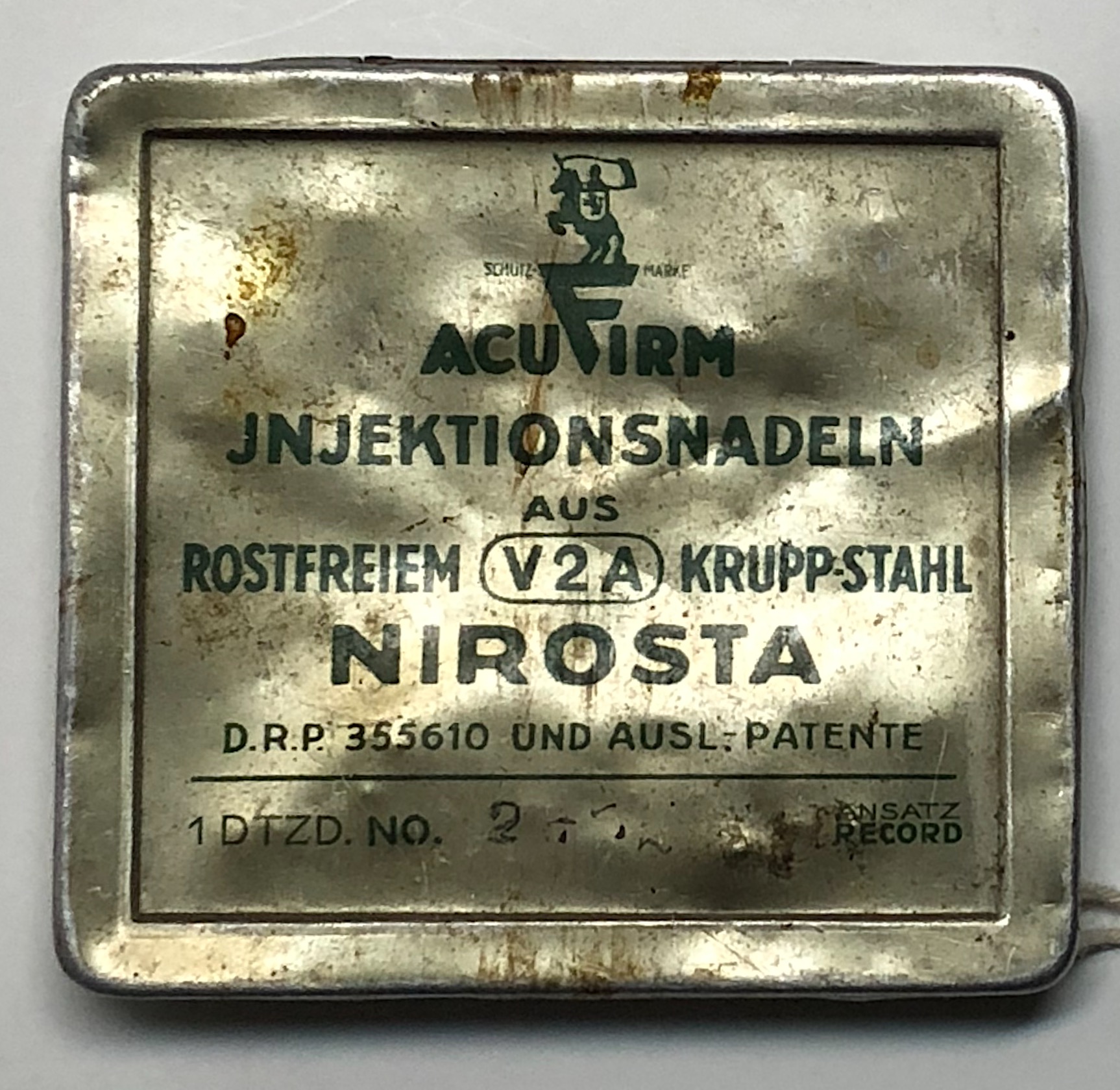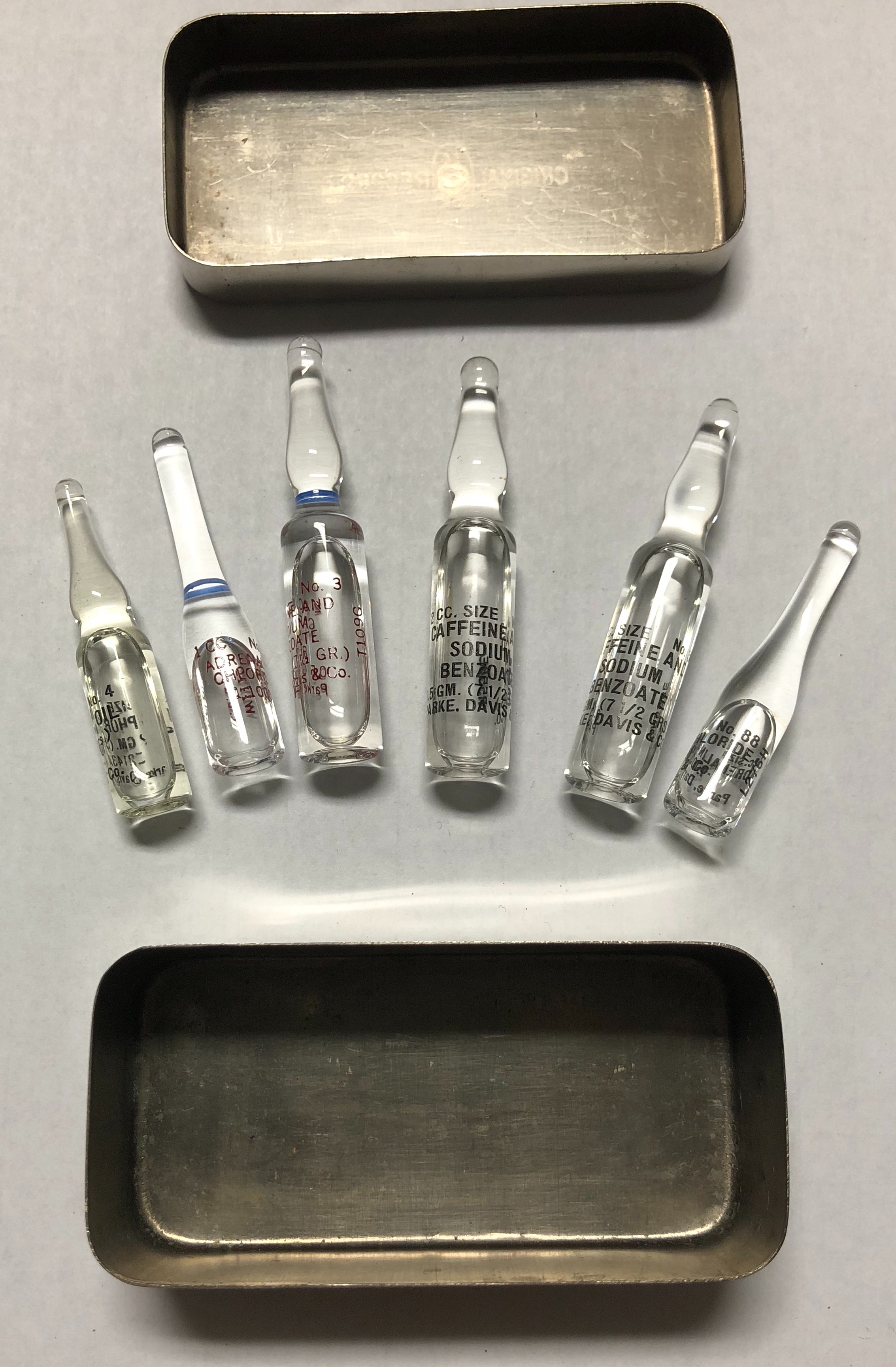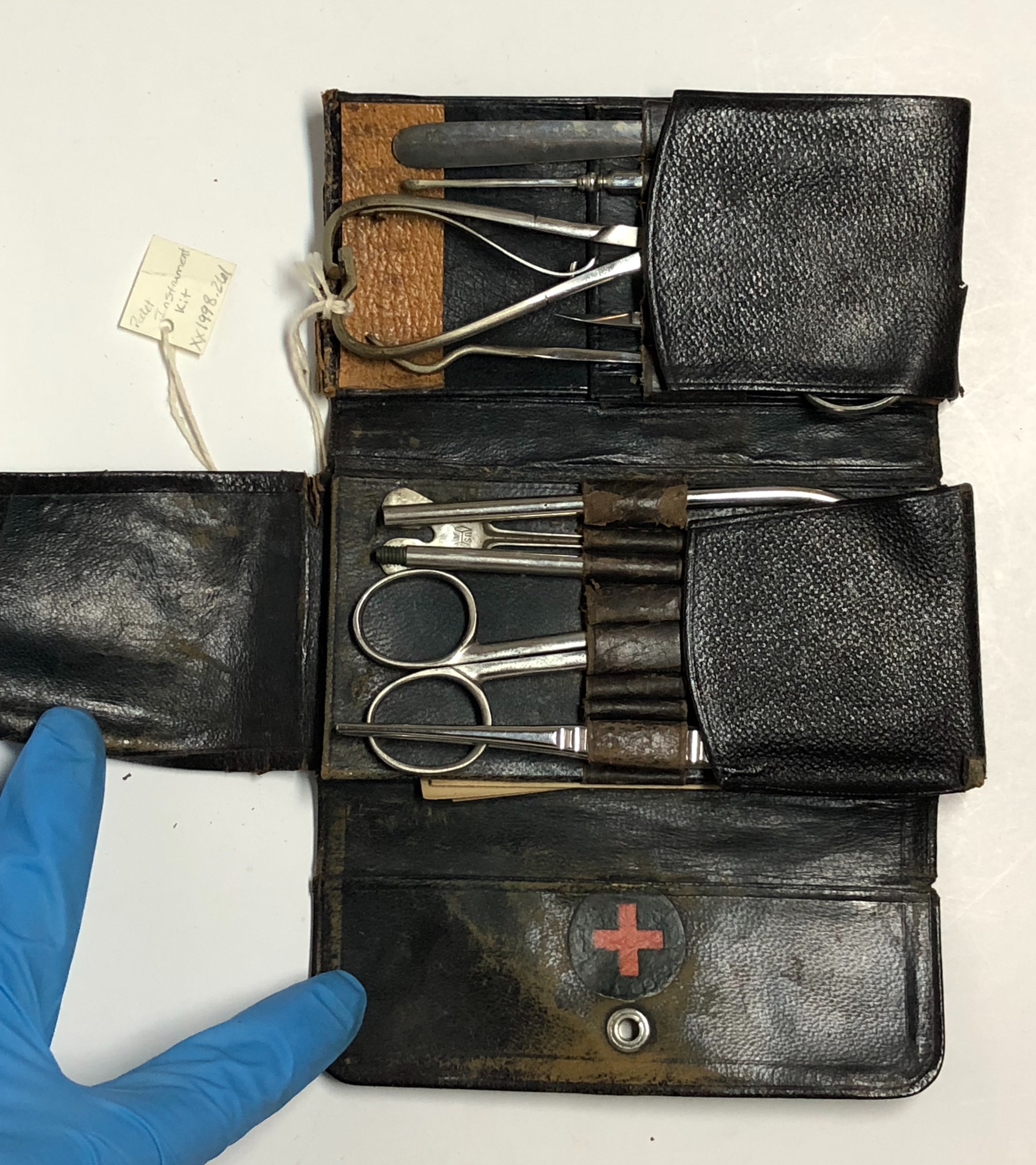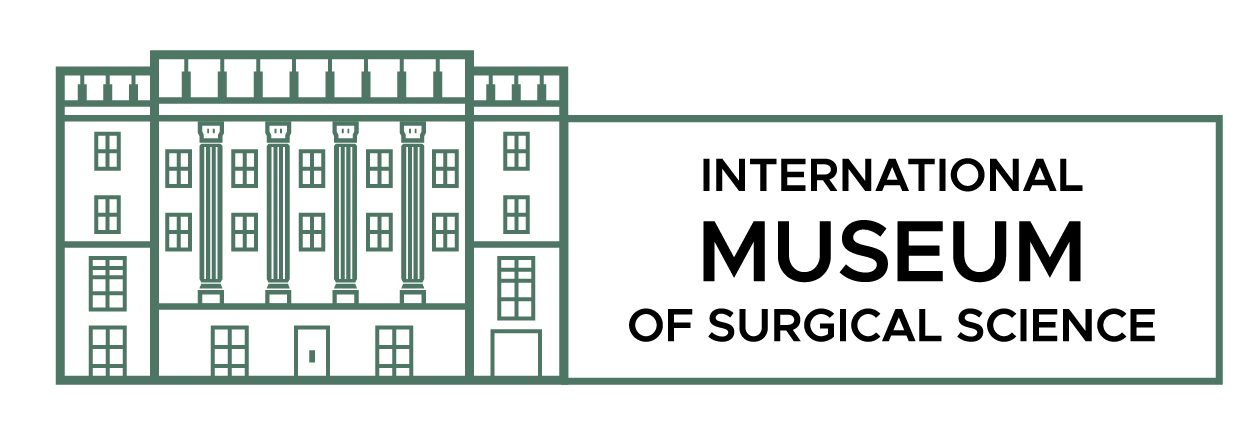Published by Claire Olszewski.
 With Memorial Day having just passed, I thought it would be a good opportunity to discuss objects I have found within the collection that have been dated between 1930 and 1960, during World War II. While we do not have evidence that the items in our collection were actually used in the war, they are good examples of instruments and tools used by medics of the time. World War II has the reputation of being the catalyst for many medical advancements in our history – increased potency and mass production of penicillin, as well as tetanus immunization and improved gas masks, saved countless lives.
With Memorial Day having just passed, I thought it would be a good opportunity to discuss objects I have found within the collection that have been dated between 1930 and 1960, during World War II. While we do not have evidence that the items in our collection were actually used in the war, they are good examples of instruments and tools used by medics of the time. World War II has the reputation of being the catalyst for many medical advancements in our history – increased potency and mass production of penicillin, as well as tetanus immunization and improved gas masks, saved countless lives.
Hypodermic needles are thin, hollow and beveled tubes, attached to a syringe and used to inject medicine or extract fluids from the body. In World War II, these needles were used to administer morphine, penicillin and other medicines to injured and ill soldiers. This method of delivery was superior to the consumption of pills because utilization of the drug by the body occurred a fraction of the time and was safer on the organs. Unlike nowadays when hypodermic needles are fully disposable and ensured sterilized, these needles were reused by medics multiple times.

After use, the medic would sterilize the needle by flame. Syrettes were another method of medicine delivery, commonly used in World War II by the soldiers themselves. They were single-use, single-dose capsules of morphine with a needle on the end, supplied in soldier’s medical kits to blunt the pain of a wound when medics were not readily available. This case of hypodermic needles is German made dated c.1940, possibly used by the German forces. The case reads in German “injection needles made of stainless steel.”

Also found in the collection were metal tins holding ampoules of medicines administered by hypodermic needles. Ampoules are small glass capsules containing varying types of liquid medicines from caffeine and sodium solutions to meralluride and morphine. To use an ampoule, the administer must break the glass at the thin part of the neck and extract the liquid from the capsule with a syringe. They were liked by medics because they were “perfectly” measured to be single dose and allowed for rapid delivery. The ampoules we have here at the Museum are dated circa 1930-1960 and are great examples of the ampoules you would have seen in red cross field hospitals.
Medical kits containing surgical instruments, like the one we have in the Museum’s collection, were carried by field medics in World War II to provide immediate medical attention to inflicted soldiers in critical condition. They contained various surgical tools such as forceps, curettes, scapula, scissors, and sutures. When in battle, these instruments would often go unsterilized, used from victim to victim to save precious time. The case we have here is made of leather, but you would also commonly see canvas cases.

Sources:
“Combat Medics of WWII.” Google, Google, artsandculture.google.com/exhibit/qALSyyD-LpymLg.
“Medicine and World War Two.” History Learning Site, www.historylearningsite.co.uk/world-war-two/medicine-and-world-war-two/.
Claire Olszewski is the Permanent Collection Intern at the International Museum of Surgical Science. She graduated from Columbia College Chicago in December of 2017 with her BA in Visual Arts Management and minor in Art History. She currently works at Linda Warren Projects as a Gallery Assistant.

